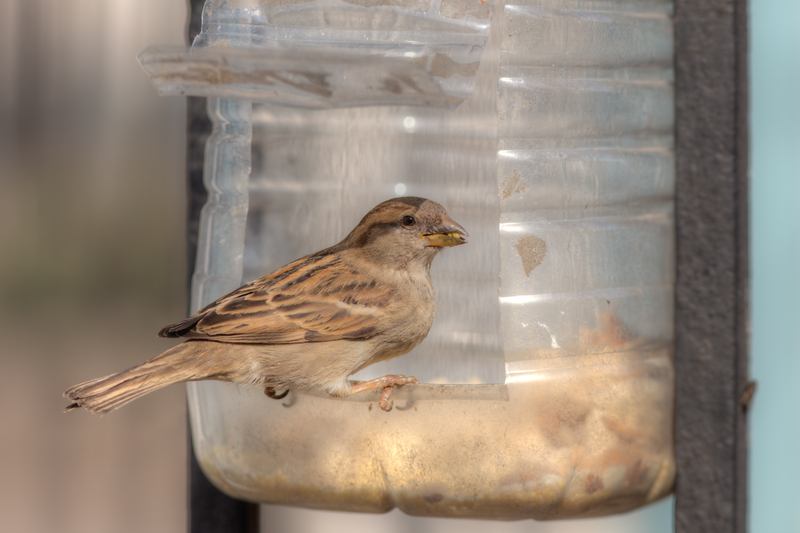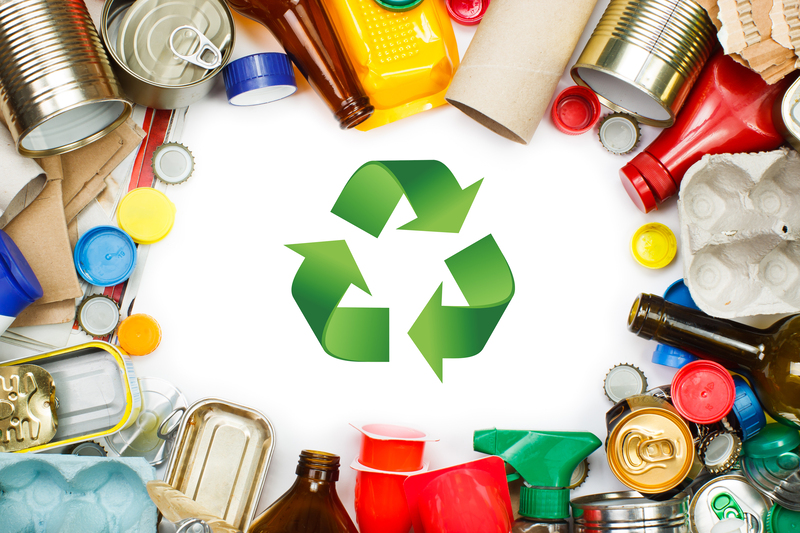Elevate Everyday Waste into Works of Art Using Creative Upcycling Approaches
In today's world, sustainability is more crucial than ever. As communities grapple with the mounting challenge of waste management, innovative practices have emerged to transform trash into treasure. Upcycling--the act of repurposing discarded materials into items of greater value--stands at the forefront of this movement. and when fused with creative expression, it allows anyone to elevate everyday waste into works of art. Dive into the marvels of upcycling, discover imaginative approaches, and find inspiration to turn your household scraps into breathtaking masterpieces that can beautify your home and benefit the planet.
What Is Upcycling? A Closer Look
Before we plunge into creative upcycling approaches, let's define upcycling itself. While recycling focuses on breaking down materials to reuse their basic components, upcycling breathes new life into waste by converting it into valuable, often artistic items. Upcycling transforms ordinary refuse--such as glass bottles, paper, textiles, and plastics--into decorative, functional, or expressive works of art.
Elevate everyday waste into works of art is not just an eco-friendly slogan but a way of life. Each upcycling project helps:
- Reduce landfill waste
- Conserve natural resources
- Encourage individual creativity
- Promote sustainable consumption

Why Choose Creative Upcycling Over Regular Recycling?
Some may wonder about the differences between upcycling and recycling. Both have environmental benefits, but creative upcycling approaches also:
- Preserve the original integrity and energy of the material
- Encourage personal or collective artistic expression
- Provide unique, one-of-a-kind results
- Foster a sense of accomplishment and innovation
- Serve as meaningful gifts or conversation pieces
When you transform everyday waste into visual or functional art, you're actively cultivating a circular economy and redefining beauty in the world around you.
Types of Everyday Waste You Can Upcycle into Art
You might be surprised at how many household items are just waiting to be transformed. With a bit of imagination, you can elevate waste into striking art objects using materials such as:
- Glass jars and bottles: Candle holders, vases, mosaic pieces
- Plastic containers and bottles: Planters, sculptures, storage solutions
- Wood scraps and pallets: Wall art, frames, furniture
- Cardboard: 3D artworks, organizer bins, kid's crafts
- Old textiles and clothing: Patchwork quilts, rag rugs, wearable art
- Metal cans and bottle caps: Wind chimes, garden decorations, jewelry
- Paper and magazines: Collages, origami, decoupage pieces
Save these items instead of tossing them in the trash. You'll have a ready supply of materials for your upcycling endeavors.
Creative Approaches to Upcycling Waste into Art
How does one begin to elevate everyday waste into high-value art? Below are multiple approaches for upcycling, ranging from simple DIY crafts to advanced innovations seen in galleries and public art installations.
1. DIY Upcycled Home Decor
The home is an excellent canvas for showing off your upcycled masterpieces. Here are a few ideas to get you started:
- Wine Bottle Vases: Remove labels from empty bottles, paint or etch the glass, and use them as stylish floral vases.
- T-shirt Wall Hangings: Stretch colorful T-shirts over frames or embroidery hoops to create bold wall art.
- Cardboard Sculpture: Cut and glue cardboard into geometric forms or animals, finishing with paint or decoupage for flair.
Upcycling household waste into home decor not only reduces clutter but also adds a personal, artistic touch to your environment.
2. Upcycled Jewelry: Wearable Art from Throwaways
- Reshape bottle caps into trendy earrings or pendants
- String beads from old magazines onto elastic for paper bead bracelets
- Repurpose denim scraps into statement necklaces
Using creative upcycling approaches, even the smallest bits of waste can become works of wearable art.
3. Artistic Upcycling for Children's Crafts
Engage children in upcycling ingenuity. Turn waste into teachable moments about sustainability and the joys of crafting:
- Make egg carton critters by painting and assembling cut egg cartons into animals
- Create milk jug watering cans by poking holes in lids
- Construct toilet roll castles for endless imaginative play
By using trash as art materials, kids learn resourcefulness, environmental ethics, and fine motor skills.
4. Garden Art from Everyday Trash
Gardens offer a lush backdrop for inventive upcycling. Try:
- Turning plastic bottles into self-watering planters
- Creating bottle cap mosaics for paths or fences
- Using tin cans as hanging planters or painted luminaries
5. Community and Large-Scale Upcycling Projects
Many cities and communities now elevate waste into stunning public art or functional installations. Examples include:
- Sculptures built from recycled metal and plastics
- Benches or garden beds made from old tires or pallets
- Murals using repurposed bottle caps or seashells
These upcycled art installations beautify shared spaces while raising environmental awareness dramatically.
Famous Examples: Artists Who Raised Upcycling to an Artform
Many renowned artists have risen to international fame by elevating discarded materials into extraordinary works. Let's highlight a few:
- Vik Muniz: This Brazilian artist recreates famous images using trash and recyclable goods, photographing his compositions for stunning results.
- El Anatsui: Known for large-scale installations using thousands of discarded bottle caps, the Ghanaian artist's work fuses craft, history, and repurposing.
- Jane Perkins: Perkins crafts playful portraits and landscapes from buttons, beads, and other found objects, adding dimension to her pieces with unexpected textures.
Such innovative voices underscore how anyone can elevate everyday waste into works of art, regardless of background or budget.
Benefits of Upcycling Waste into Artistic Masterpieces
Why should you embrace creative upcycling approaches? The reasons go far beyond aesthetics. Upcycling empowers individuals and communities to:
- Reduce landfill pressure: Fewer items end up as polluting waste
- Conserve resources: Raw material use decreases, saving water, energy, and forests
- Promote unique craftsmanship: Each piece is one-of-a-kind, telling its own story
- Boost mental well-being: Artistic creation is therapeutic and rewarding
- Teach sustainability: Upcycling encourages stewardship and eco-consciousness
- Inspire others: Upcycled art can spark dialogue and motivate broader change
By choosing to upcycle waste into art, your ecological footprint shrinks as your creative horizons expand...
Getting Started: Tips for Elevating Waste into Art
- Start Small: Choose manageable projects with everyday items--like a glass jar turned candle holder or magazine collage.
- Collect and Sort: Set aside clean materials in bins for future use (paper, glass, fabric, plastics, metals).
- Gather Inspiration: Follow upcycling blogs, Instagram accounts, or online communities for DIY tutorials and project ideas.
- Experiment: Don't be afraid to combine materials or techniques in novel ways.
- Share Your Work: Display pieces at home, participate in local fairs, or post your creations online to inspire others.
Advanced Techniques in Upcycled Art
If you're seeking to push your creativity further, consider these advanced upcycling strategies:
- Mosaic Making: Break unwanted ceramics, mirror pieces, or colored plastics for intricate mosaic artwork.
- Assemblages: Combine three-dimensional objects (toys, tools, utensils) into sculptural art.
- Textile Fusion: Weave, sew, or felt old clothing together to produce abstract wall hangings or wearable pieces.
- Mixed Media Painting: Glue layers of trash items onto canvas, then paint, draw, or print over them for depth and texture.
Pushing the boundaries of upcycling art yields exhilarating results while broadening your problem-solving and design skills.
Creative Upcycling Challenges and How to Overcome Them
While it's exciting to transform everyday waste, upcycling isn't without obstacles. Some common hurdles include:
- Finding Clean, Safe Materials: Always clean waste items thoroughly. Avoid materials that could harbor bacteria or emit toxins.
- Ensuring Durability: Some upcycled art isn't suited to outdoor use unless properly treated with sealants.
- Storage: Store collected materials in an organized way, to prevent space issues or confusion.
- Creative Block: When inspiration wanes, visit art galleries, consult Pinterest, or collaborate with friends for fresh ideas.
With patience and an open mind, most upcycling challenges are mere stepping stones to greater creativity and innovation.
Upcycling for Social Impact: Community Programs and Initiatives
Numerous organizations are harnessing creative upcycling approaches for social good. Look for:
- School Programs: Engaging students in upcycled art projects to nurture environmental stewardship
- Nonprofit Workshops: Offering vulnerable populations income through the sale of upcycled crafts
- Neighborhood Beautification: Using artistic upcycling to transform neglected spaces into vibrant community hubs
Not only does this approach fight waste; it empowers participants with skills, confidence, and community pride.

Eco-Friendly Practices to Complement Upcycling Art
- Compost Organics: While upcycling focuses on non-biodegradable waste, composting remains vital for food scraps and yard waste.
- Choose Non-Toxic Supplies: Use water-based glues, natural dyes, and plant-based sealants when crafting.
- Educate Others: Share your journey and teach upcycling skills to friends and family for a larger positive impact.
Conclusion: Transform Today's Waste into Tomorrow's Artistic Legacy
To elevate everyday waste into unique works of art using creative upcycling approaches is to embrace a mindset of limitless possibility. Every discarded object holds potential, waiting for a creative spark to transform trash into treasures that captivate hearts and minds.
Whether you are crafting alone at home, collaborating with children, or joining community public art initiatives, upcycling empowers you to make a statement. Your imagination is the only limit. So begin collecting, experimenting, and showcasing your upcycled creations. Let your journey inspire others to see waste not as a problem--but as the raw material for a more beautiful, sustainable world.
Ready to elevate waste into art? Grab your recyclables and start your upcycling adventure today!
